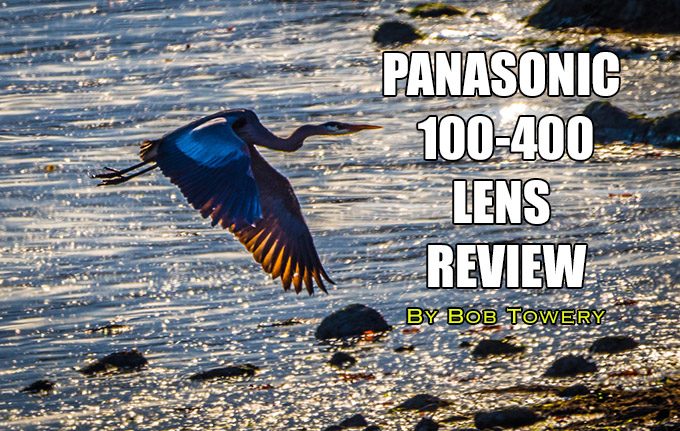
The Mighty Panasonic-Leica 100-400mm Lens Review
By Bob Towery
I recently acquired the Panasonic Leica 100-400mm lens to go along with my Olympus OMD-M5 Mk II kit. I didn’t start off with the idea of writing a review but as I began getting to know this lens I thought it might be a nice addition to Steve’s excellent collection of resources for us enthusiasts. (From Steve: Thank you Bob)!
As background, I have been shooting digitally since 2001, with Canon bodies and a wide array of L lenses. I have had a number of 70-200’s, as well as 300mm and 400mm L primes.
About five years ago I wanted to get into a smaller kit for travel work. Partly with the excellent information I got here on Steve’s site, I got a Leica M9 setup and used this for quite a few trips. But I do enjoy telephoto work as well, and certainly that’s not the M9’s forte. And although I became pretty proficient at both manual focusing, there are still those instances where you have one second to get a shot and it’s lucky indeed to have pre-focused accurately. I found I was only using my M9 when going street shooting.
Fast forwarding, when the Fuji XT series came out I dove in. Somehow I just never warmed up to this system. It’s AF was exceedingly poor (since improved I’m told). The camera also failed on a trip, the first time that had ever happened to me. Although Fuji did a stellar job of repairing it quickly on their dime, this unnerved me and I sold that kit off.
Knowing Steve had always been an Olympus fan, I followed those reviews, and when the OMD M5 II was released I jumped into the Oly pool. Using the Olympus kit has been very rewarding. It’s a high performing camera, with the only limit (for my use) being the noise at higher ISO’s.
THE SCENE
Living where I do on an island near Seattle, I have a lot of opportunities to shoot interesting birds like Bald Eagles and Great Blue Herons. The Fuji would nearly always miss. So the first paces I put the Oly through were to shoot these birds, and its AF performance was excellent. This was with the 40-150mm, so fully zoomed in we are at 300mm effective. But even these large specimens of the bird world are pretty small subjects. BTW, below I’ll do a few comparison shots with both the 100-400mm and the 40-150mm.
It’s spring time right now and there are a lot of beautiful flowers to shoot here. This will be a “real world” review. Some of the images are those subjects I enjoy shooting, and some are just for the review factor.
THE MIGHTY PANASONIC-LEICA 100-400mm
Enter the Panasonic-Leica 100-400mm! Image stabilized, effective focal length (long end) of 800mm. Before we get into the pictures, I want to state that I’m not a professional reviewer, or even photographer, just an enthusiast. I know many of you would do your own tests differently than mine. My testing was around the kinds of things I like to shoot, which don’t involve test patterns. And all of these are real world, no tripods involved (well, one exception). Also, to be practical when I give a focal length, it will be what LR reports and is on the lens body, i.e. in-between 100 and 400. If you want to double the focal lengths you see given the body’s crop factor that is fine by me.
WHAT ABOUT THE NEW OLYMPUS 300mm?
We all know Olympus was building and releasing their 300mm prime at about the same time. I considered this for a short time, as I prefer Olympus products and given the price of this glass, it’s going to be a fine prime performer. I’d bet my 401k that the Oly 300mm will outperform the Panasonic 100-400mm handily at the same focal length. But for me, these primes are impractical. “Zoom with your feet” really doesn’t work when say you are standing on a beach looking out, or trying to catch a flying bird. There have been times where I approached a sitting bald eagle with my full frame body and 400mm, and by the time I got close enough to make them fly away for a glorious picture, I can’t get the whole bird in the frame – too close! At an effective 600mm, I just can’t count on being the right distance from my subject. So the Oly 300mm prime is out for me.
HOW’S YOUR STABILITY?
I’m sure most readers know the camera has IBIS (In Body Image Stabilization) and the lens has its own IS. Unlike a Panasonic body mated to the lens, sadly the Oly IBIS and the lens IS do not speak the same language. From my reading, and brief testing on my own, the best option is to turn IBIS off and use the lens IS, so that is what I did.
IMAGES IN THIS REVIEW
Also, Steve told me to process as I normally would. In general, this means a few tweaks in Lightroom, 90% of the time less than one minute’s work. I’ll point out below when I did no post. All images were made with the Olympus OMD M5 Mk II and the Panasonic/Leica 100-400 unless otherwise indicated. Only one shot was with a tripod. Others are hand held, sometimes with me leaning against a post. Apologies in advance if I didn’t test something as you would have. I really wanted to include some people shots, seeing how it rendered faces, even if that isn’t a practical use for the lens, but I didn’t have an opportunity to work that out.
Also, all images were exported from Lightroom using Screen/Normal sharpening. I decided to number the images, as readers often comment by number.
All right, let’s hit the road.
THE SAPSUCKER STUDY
Shortly after the lens arrived, I had a lunch planned with a friend who happens to be a great and dedicated wildlife photographer. Our lunch date was to discuss an upcoming joint trip. I had thrown the Oly and the lens in the bag, basically just to show him. He’s a Canon shooter too, no M4/3 experience.
When we got back to his home I opened the trunk and zipped open the bag. I handed it to him and we were chatting, but noticed a loud woodpecker nearby. I said, “let’s go check this out” and he said “they usually fly away once you start staring at them.”
#1 – 264mm, f/5.5, 1/2000, iso 640
Before we get to the “good shots,” I want to share this one, to show you what we were up against. (And it turned out to be a red breasted sapsucker, not a woodpecker, but they still bang away on the tree.) The sapsucker is in constant motion, including jumping from one branch to another. The tree is filled with branches both in front of and behind the bird. But notice that even in this tangled mess, with center dot focus selected, the lens focused perfectly.
CLICK ALL IMAGES IN THIS REVIEW TO SEE THEM CORRECTLY!
So as I began shooting, I had to move both left and right around the tree, while waiting for him to get clear.
#2 – 400mm, f/6.3, 1/1600, iso 640
It was a pleasure to have the reach to fill the viewfinder with a bird that is just say six inches high. Here at 400mm and a distance of perhaps 20 feet, the bird and the branch are magnificently sharp.
Crop of #2
Here is a 1:1 crop from this frame. How long is that talon, 3/8”s of an inch?
#3 – 300mm, f/8.0, 1/500, iso 640
Moving along to bokeh, this certainly isn’t the finest I have ever seen. And I wouldn’t expect it to be, given the massive range of this lens, the f/6.3 aperture when fully zoomed, and the sub $2,000 price tag.
#3 with background smoothed in Lightroom
However here’s what I got in about a minute in Lightroom. I used the Adjustment Brush, with the Clarity and Sharpness sliders all the way to the left. Then I went around the birdie numerous times which did a nice job of softening up the background area. I then lightened up the bird’s back just a tad. Given the fact that I’d have no shot at all with most of my other lenses, I can live with this.
As I’m getting these shots and my friend and I are viewing them on the LCD, he begins getting jumpy and then dashes into the house. He returns with his amazing Canon 200-400mm, mounted on an older 1D Mk IV. I have serious lens envy, but that kind of size just isn’t practical for me.
#4 – Iphone
My wife got this shot of us with her iphone. Guess who can handhold longer?
#5 – Samsung S6
Here we have King Kong on top and Cheetah below. Interestingly, my rig is both wider and longer than his, focal length speaking. His is a 1.3 crop body, thus the “widest” is 260mm. The lens has a 1.4 teleconverter built in, so with that engaged, he’s at 728mm by my calculation.
Of course I would never expect the Panasonic to compete with this Canon in IQ. However it does cost six times as much and weighs eight pounds. (My apologies, my friend didn’t get any shots that he felt like sharing, so we could compare.)
IMAGE WITHIN AN IMAGE
Over the years I have found finding new compositions within my images to be very rewarding. View your image full size, set a crop, then drag the crop around in the Navigator window. It’s surprising how often you can get an additional image or two from one of your shots. Sometimes even more compelling than your in-camera composition. But of course there is a penalty in terms of resulting image size, due to the crop. Not a big deal for blog/facebook posting, but would come into play say if you intend to print.
#6 – 100mm, f/5.6, 1/200, iso 400
When I saw the scene above, my thought was that the child on the bike could be interesting. Looks like a beginner, the setting is quite nice, and so on.
#7 – 280mm, f/5.6, 1/500, iso 400
Look what happens zooming way into the scene. The rider is nicely isolated. Bonus points for my timing of an otter jumping into the scene, what do you say? Normally I’d crop that out but it’s so unusual I left it in just for the fun factor. If I cropped that deep into the original image, there just wouldn’t be enough pixels left for much use. I believe at the time I planned to wait for the rider to get into that sunny area, but the otter surprised me so much I lost track. (I scrambled down on to the beach to try to get him too, but he was long gone.)
#8 – 141mm, f/9, 1/640, iso 200
When I saw this sailboat going by, I wanted to get a couple shots just to see how clearly the lens would render the lettering and sailboat details. But thinking about this “image within an image” idea I zoomed all the way in and moved the lens around the boat.
#9 – 400mm, f/9, 1/640, iso 200
I found this colorful and pleasing composition and grabbed a couple frames.
#10 – 400mm, f/8, 1/1250, iso 400
This kayak was WAY far away. I would estimate 300-400 yards. The piling and bird are about half way to the kayak. Thought it would be interesting to see how the foreground would be rendered when I focused on the kayak. This is about a one quarter frame crop!
MT. RAINIER STUDY
So I’m very fortunate to have a view of Mt. Rainier from my backyard. She’s only out one out of every three to four days. There are often clouds that completely obscure her.
#11 – 70mm on a Canon FF body
Google Earth says the summit is 60 miles from my house. I wanted to get a full frame shot at 50 mm to show you what that looks like in person. But the weather hasn’t cooperated, so here is an older image I shot at 70mm on full frame. What can we do with the Panasonic 100-400mm on a nice day?
#12 – 400mm f/9, 1/800, iso 200
Here we are at 400mm. Handheld! Note that between our positions are Seattle’s southern suburbs, as well as the Sea-Tac airport. The sky is continually filled with jets. It takes a rare day to have completely clear air, and I didn’t have any while preparing this piece. So I believe some lack of sharpness here is because we are looking through 60 miles of air as opposed to lens performance.
#13 – 300mm f/8, 1/200, iso 200 – tripod mounted – 12 sec timer
I took this one at 300mm as it includes an island that provides a little context. Used a polarizer to cut through the haze.
GOING BOATING
#14 – 100mm, f/6.3, 1/1000, iso 200
There is a continual parade of boats in front of my place. Including ferries, commercial, military and pleasure craft. Here is one that isn’t real attractive but serves our purpose of seeing what this lens can do. This is a small boat, 30 feet at most. Above is what it looked like at 100mm.
#15 – 400mm, f/6.3, 1/1000, iso 200
Full zoomed in. Keep in mind the boat is moving, I’m having to pan to keep up with it. Pretty acceptable detail.
#16 – 400mm, f/8, 1/2000, iso 400
Google Earth tells me this buoy is 735 yards from my location (that’s more than four-thirds of a mile).
Sea lions often jump up onto the buoy and boats and other passersby stop in for a look. In this case some kayakers. Previously I have only been able to see this kind of detail with my high powered binoculars.
#17 – 400mm, f/8, 1/2000, iso 400
As I’m shooting this, a speedboat comes along. While I can’t make out the license numbers on the bow, I can clearly read the model letters on the side. See the faded “4” on the top right of the buoy? Not bad from this distance.
#17 – crop detail
FYI this shows the crop in the boat/buoy image.
#18 – 300mm, f/8, 1/800, iso 200
This boat was much closer. This is the uncropped shot at 300mm. Boat is going perhaps 20 mph; I’m panning. Everything looks good to me.
#18 – crop detail
Take a look at this crop. Look straight down from the second zero in “2000.” There are two openings there. The one to the right is most likely a drain from an ice chest compartment. We are talking two inches wide, at the max. I’d say that’s pretty amazing detail. One can see that the dye from the canvas is leaching out and staining the hull, and this is in a shaded spot!
#19 – 236mm, f/5.3, 1/640, iso 640
Lots of small details to look at in this ferry shot. Note that these ferries really move – about 23mph. This is a bit of a crop. Full size, it is very sharp.
#20, 100mm, f/4, 1/80, iso 1600
This shot amazes me. There had to be some luck involved with my panning here, given that I’m at 1/80th and the shot is very sharp. But look at that perfect focus, in the dark.
BUILDING STUDY
#21 – Panasonic 100-400 – 146mm, f/8, 1/640, iso 320
Let’s get into comparing the 100-400 vs the Olympus 40-150 PRO. I really didn’t expect the Panny to hold up well against this lens, but once again I am surprised, in a good way. These shots are about a minute apart. I’m standing in the exact same location, attempting to have the Panny at 150 but missing by a couple mm’s. I turned IBIS on for the Olympus lens. The shot is cropped just a bit to be identical.
#22 – 40-150mm Olympus Pro – 150mm, f/8, 1/640, iso 320
There isn’t really much between these two, is there? When I look at them full screen in Lightroom’s compare mode, it’s hard to tell which one is which. Even the tonality is remarkably similar – the building, the sky and the grass. No post on these images by the way.
.
Crop of #21 (Panasonic Lens)
What happens if we examine crops to show us more detail? Here are crops of the same two images for closer comparison.
Crop of #22 (Olympus Lens)
I can see the wording on the sign is a bit sharper with the 40-150 shot. The focus was on the center rectangle, so the building was the focus spot. Perhaps the result here would have been different had I focused on the sign? It’s a slight difference in any case.
Crop of #21 (Panasonic Lens)
And here is the upper right corner, which I chose because of the tree branch.
Crop of #22 (Olympus Lens)
Once again, the 40-150 shows more definition, at least to my eye. But I don’t think there is much to complain about with the 100-400 version.
(This setting by the way is http://www.bloedelreserve.org )
FLOWER STUDIES
#23 – 146mm, f/4.6, 1/200, iso 200
The wind was blowing these plants around, so the shots don’t look as identical as they could.
I focused on the center flower in both cases. I think both images are perfectly reasonable. Kind of like the bokeh on the 100-400 shot a bit better actually.
#24 – Olympus 40-150 Pro – 150mm, f/4.5, 1/200, iso 200
But there is definitely more detail in the lightest part of the flower with the Oly 40-150 version.
#25 – 264mm, f/5.6, 1/200, iso 200
The post for this image was +38 on Vibrance, +12 on Saturation and a touch of vignette. I didn’t mess with the background area at all. Gorgeous bokeh, I’m sure due to my distance to the blossoms, and then the distance to the background.
#26 – 236mm, f/5.3, 1/1250, iso 1600
Just a touch of Vibrance.
#27 – 400mm, f/6.3, 1/250, iso 640
I came across this tuilip in someone’s yard and thought it would be interesting to see what the lens did with the very busy background. I added Vibrance as well as a graduated filter at the bottom in post, but left the background alone. Using the adjustment brush with de-Clarity would fix that right up.
#28 – 100mm / f/5.6, 1/250, iso 500
Here is the scene, from the exact same spot, minimum focal length.
#29 – 100mm, f/4.5, 1/200, iso 1600
Another shot from someone’s yard.
#30 – 146mm, f/4.6, 1/1250, iso 200
One more, just to show that a background doesn’t have to be completely blurred to add to the image.
BIRD STUDIES
#31 – 400mm, f/6.3, 1/640, iso 500
We have some spectacular birds in our area. On the larger side, we have Great Blue Herons and Bald Eagles. Wasn’t fortunate enough to get any Bald Eagles but Ms. Heron decided to join in the fun.
Herons are very aware. They are able to get airborne with one leap of those long legs. So they don’t fly off unless you get too close. Given their great size, in the past I have gotten some nice images with my full frame Canon and 400mm fixed, approaching very slowly.
#32 – 318mm, f/6.3, 1/640, iso 200
These birds are a joy to see in flight. They are gorgeous and graceful. Unfortunately they will show their tails in nearly all shots. That is because if you approach from the side, they fly the opposite way. If you approach from the back, as I did here, no matter which way they go, you only see the back. I really need to try this from a kayak or boat.
They are also smart and often wait to fly off until you look down at your footing, back of your camera, etc. So you have a very small reaction time. To me the important thing about this shot was that I sensed the takeoff, raised the camera, framed, autofocus was instant, and I got a crystal clear shot.
There’s just no griping about autofocus with this lens.
#33 – 400mm, f/6.3, 1/640, iso 500
Here is an even better test. I was out on my deck, which is about 75’ above the water. I believe I was shooting the Harlequin ducks when all of a sudden I see movement in the sky. I instinctively raise the camera, get focus and shoot. No time to play with any settings. And we have a crystal clear shot in glorious focus.
#34 – 400mm, f/6.3, 1/500, iso 500
I was very close to this tiny bird, about 15-20 feet. This bird is perhaps 6 or 7 inches beak to tail. There was a concrete half wall between the bird and I, perhaps that is why it didn’t fly off. At 200mm on a full frame, this wouldn’t be much of a shot as the bird would be too tiny for any usage. Very impressed with the lens in this situation. The definition in the feathers seems just about perfect to my eye.
#35 – 400mm, f/6.3, 1/500, iso 500
Mallards are relatively large, but at this distance, only this sort of focal length will create any type of reasonable image. This is a crop – about one-third of the frame.
#36 – 300mm, f/8, 1/500, iso 800
These harlequin ducks are regulars in my back yard every Winter/Spring. They are extremely shy and fly off basically as soon as they see you. I have never gotten a decent shot of them until now. This shot was taken from about 100 feet away. I’m far enough back that they don’t panic.
#37 – 318mm, f/8, 1/640, iso 500
Having this range leads to some compositions I have never been able to consider before.
TELEPHOTO-MACRO?
#38 – 400mm, f/6.3, 1/800, iso 320
While shooting the ducks, walking back to my house, I ran into this lizard. Pretty good size, probably 9″ long. Why not give it a try? Minimum focusing distance is 1.3 meters, which is where I was (moved a bit back and forth until I got focus lock.)
CONCLUSION
I like this lens a great deal. I have never had this kind of reach before, and for some of the subjects I like to shoot I feel it will be invaluable. I’m very impressed that the IQ compares “quite well” to the Olympus 40-150mm. If I was going on a trip where I wanted this extra reach, I’d have no problem leaving that Oly lens at home, maybe throwing in a couple of Olympus primes for the intermediate range.
All things considered, this is an effective 800mm lens that is 6.5” long (collapsed) – a modern marvel, in my book anyway.
Would really have been nice to compare my images with my friend’s, with his Canon bazooka. Especially since his older body is also a 16mp like the OMD M5 II. But I’m not trying to get into NatGeo with my images. I especially appreciate the size/weight/value proposition of this Panasonic lens. His outings with that lens are few and far between, whereas I can bring this lens along anytime I want.
Although I didn’t show these images, for a while it appeared to me that images at 300mm were superior to those at 400mm. I did some test shots and cropped the 300mm ones to see an equivalent. Upon review, my thoughts just didn’t seem to hold up. I didn’t see any significant degradation at 400mm vs 300mm.
#39 – 400mm, f/8, 1/800, iso 200
If you want to be able to shoot anything moving, quick AF is a must. This lens has it. I was down by the beach having a cocktail with my wife this evening. I noticed this heron feeding. I took some shots of her wading, but really she was just too far away, even at 800mm, to make an interesting composition. Somewhere between 100 and 150 yards. I didn’t even have the camera to my eye when I sensed the movement. Quickly raised, got focus, fired. I love this artistic rendering, with the sun more or less directly behind the heron.
Of course I wish Olympus and Panasonic would cooperate such that the body-lens combo would use both IS systems. But these results are plenty good IMHO. Every single body/lens combo is a compromise in one way or another. Even a brand new Leica SL with the 90-280 zoom could not get many of the shots on this page, not being able to reach out to an effective 800mm.
#40 – 400mm, f/6.3, 1/1000, iso 1250
I’m closing with this one last image. First, it is my favorite image in the review. The camera and lens performed perfectly, the lighting was favorable, and Mr. Heron contorted himself into this wild position. This is a crop, it’s about 60% of the frame. Imagine the FF Body/800mm lens it would take to get a shot like this? I could own one, but it is doubtful I would be all set up with it to capture this moment.
Which brings me to my very last thought (finally! You are thinking). Had it not been for needing to go shooting for this review, I wouldn’t have a lot of these shots. As I’m quite pleased with many of them, this is a reminder to us all to get off the computer and get shooting. It’s a beautiful world, and at least for me, this lens is going to help me capture that much more of it.
Thanks Steve once again for your site. Thank you to my fellow photographers for reading and I hope this is helpful.

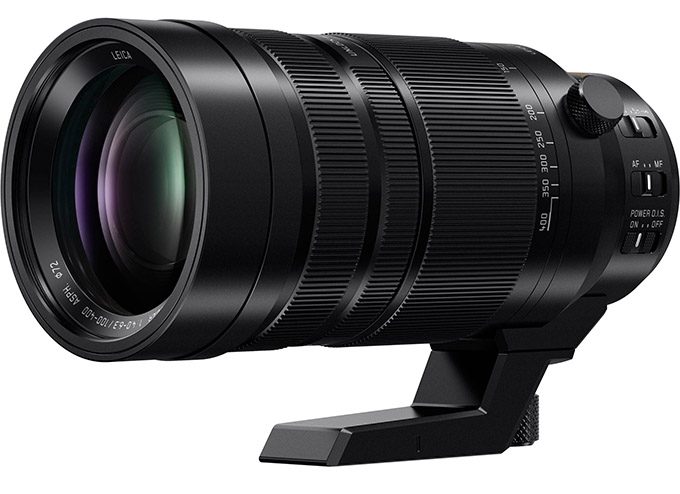
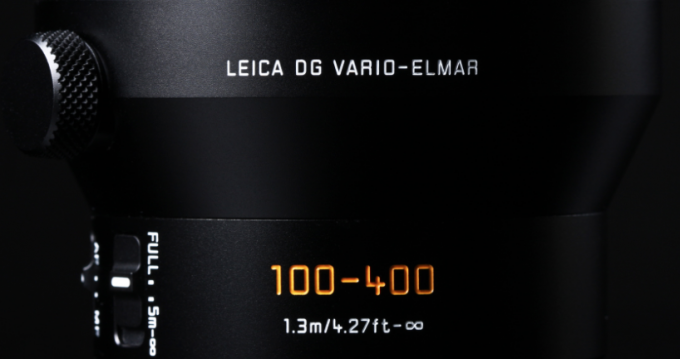
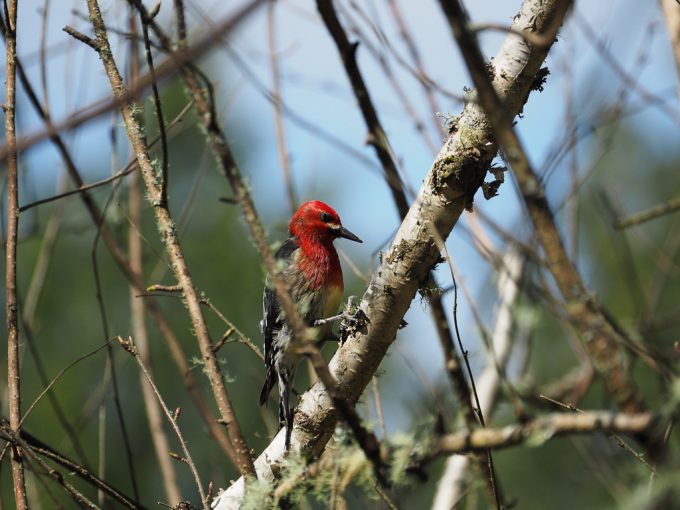
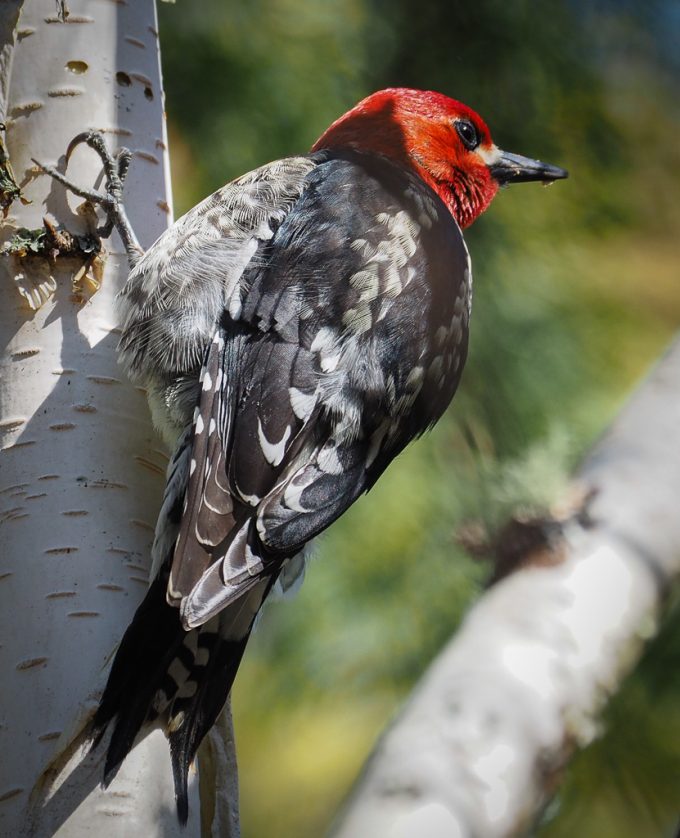
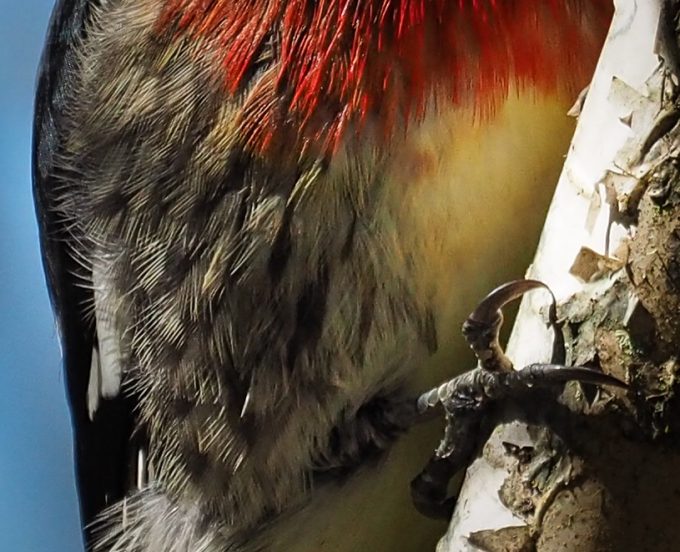
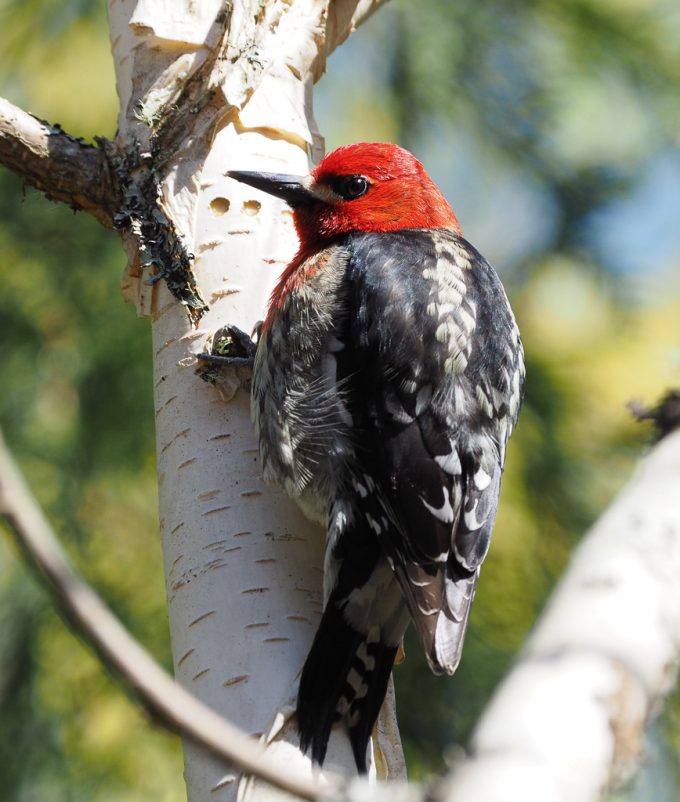
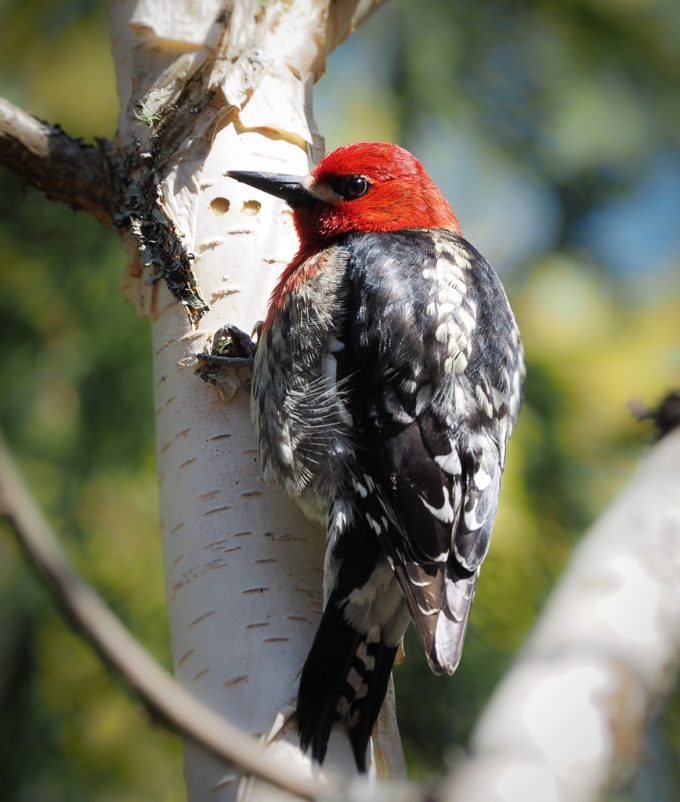
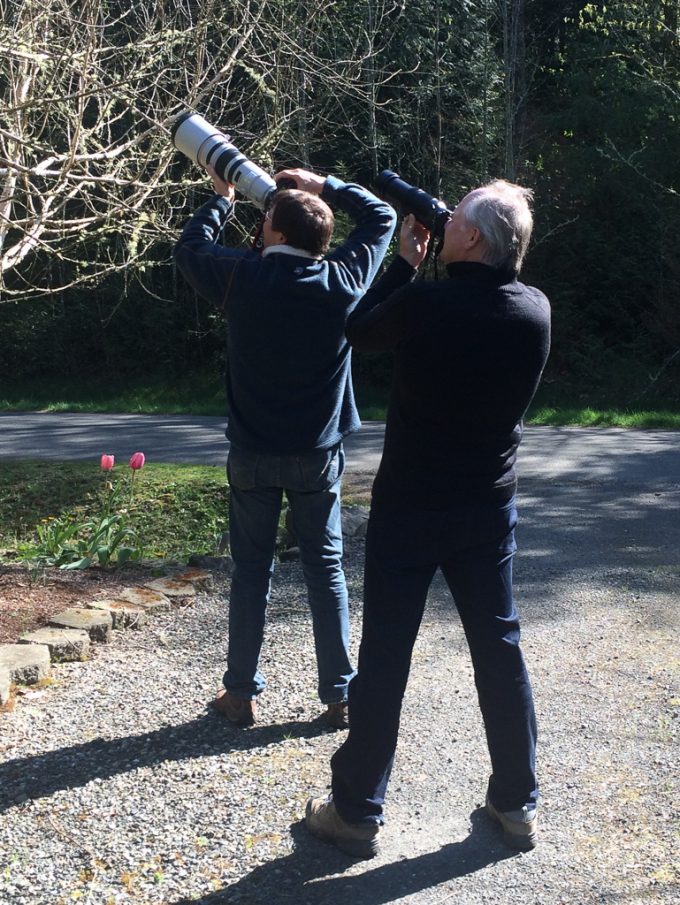
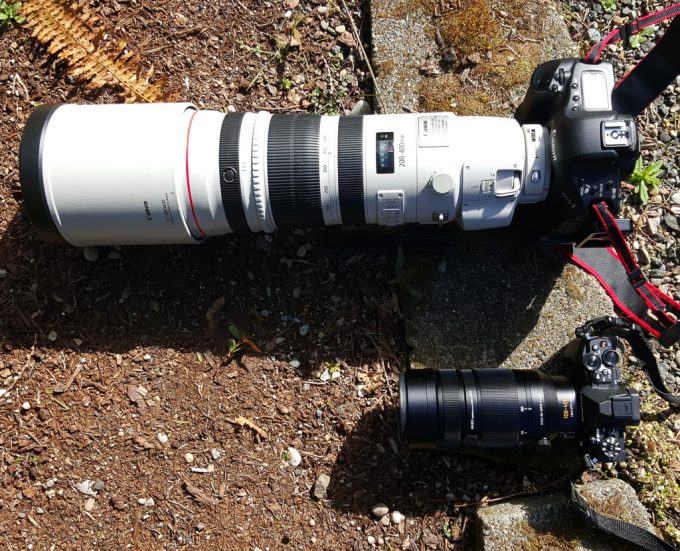
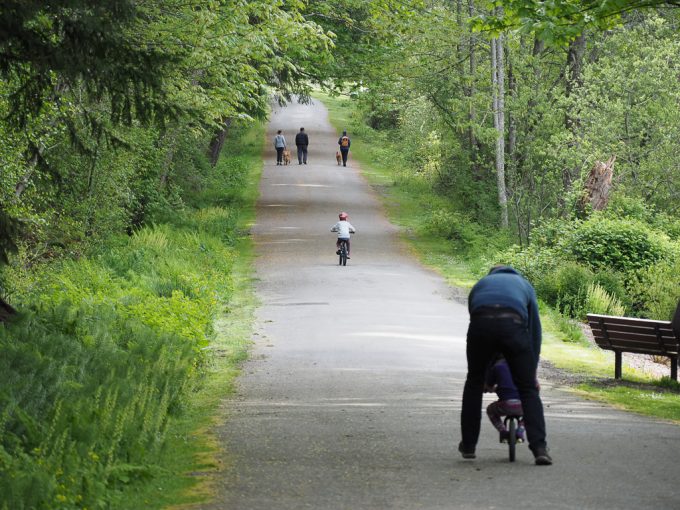
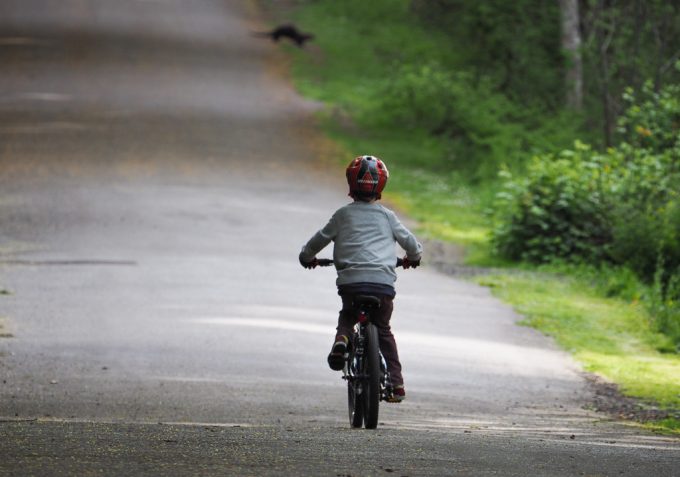
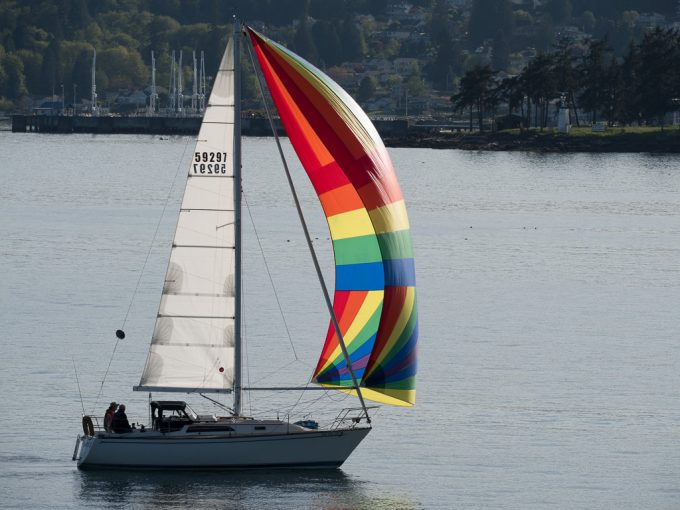
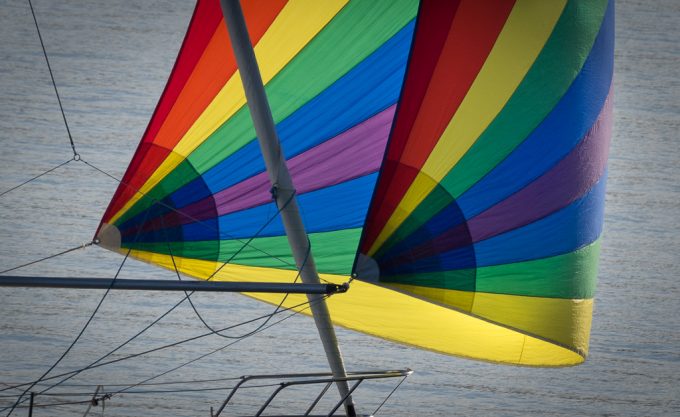
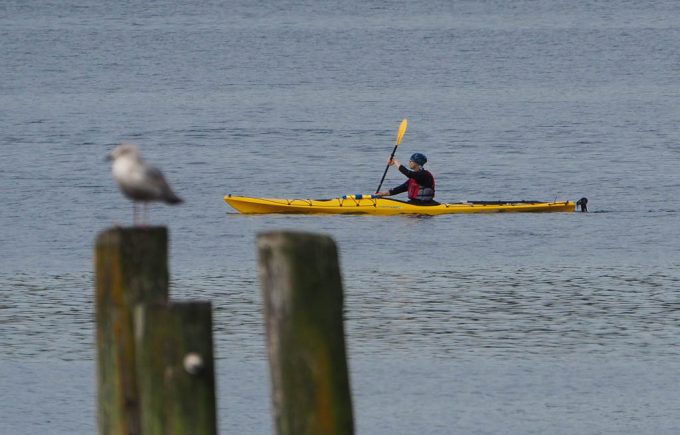
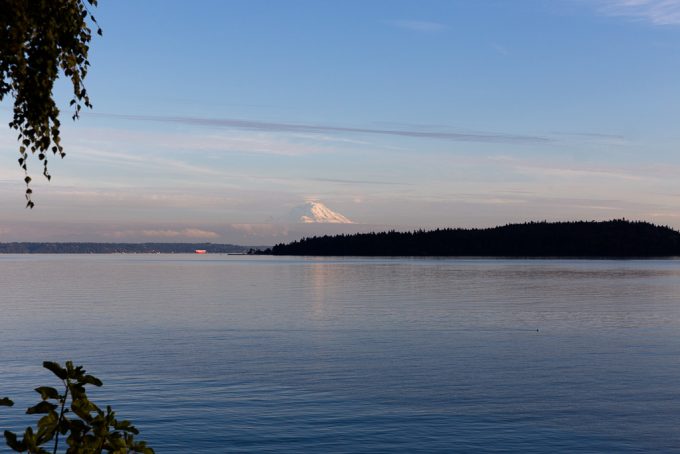

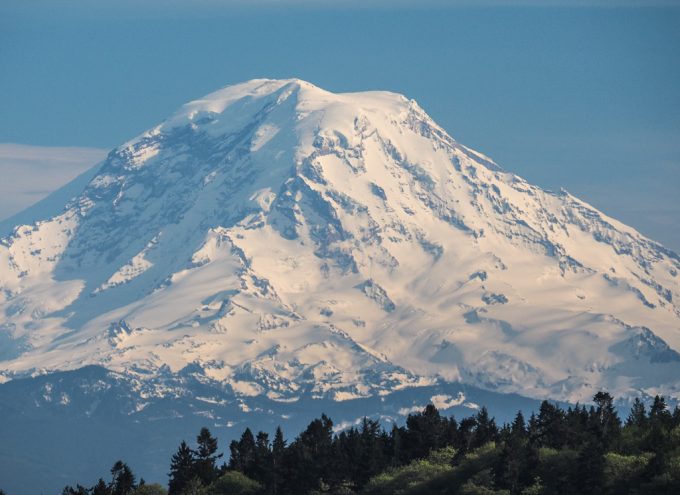
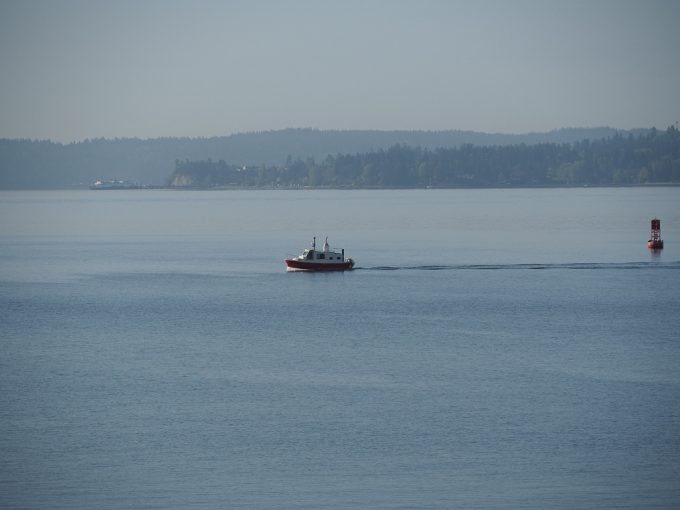
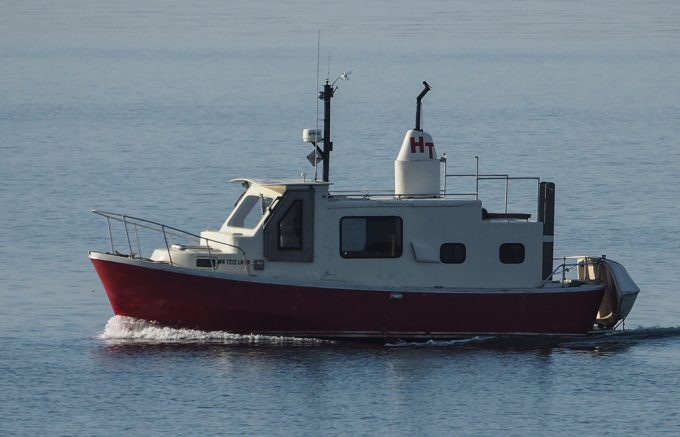
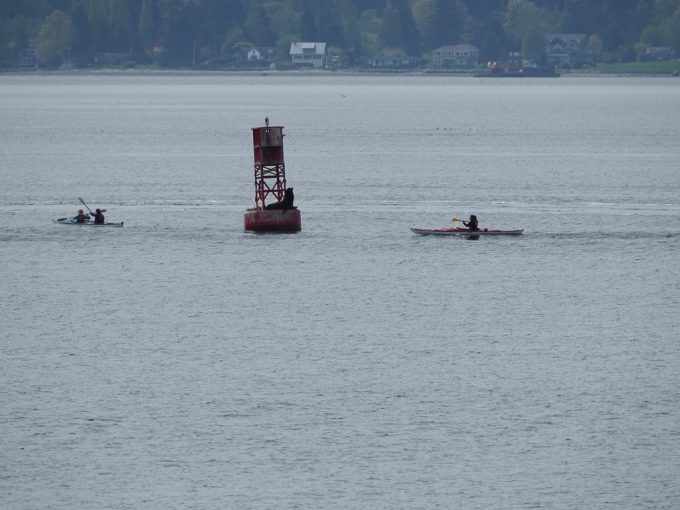
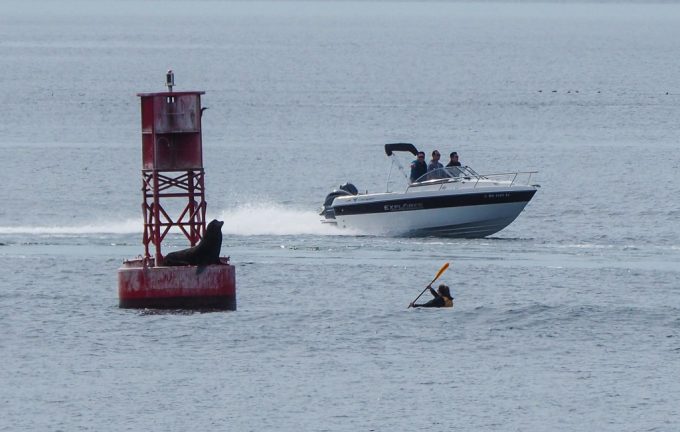
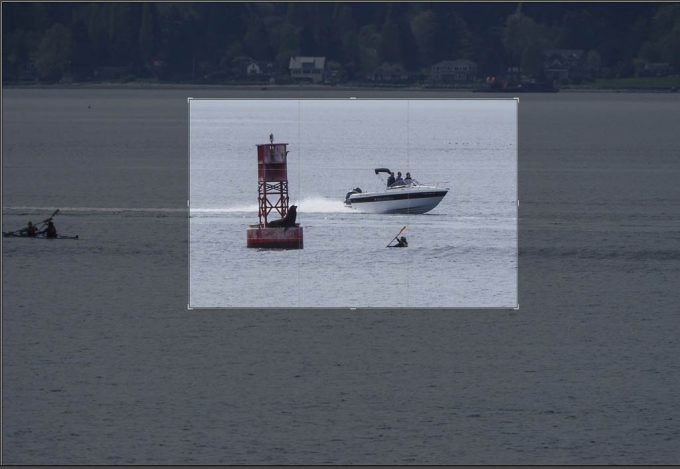
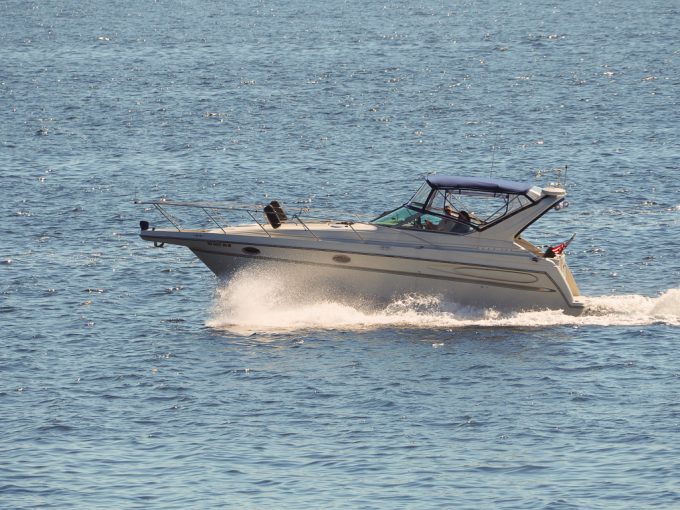
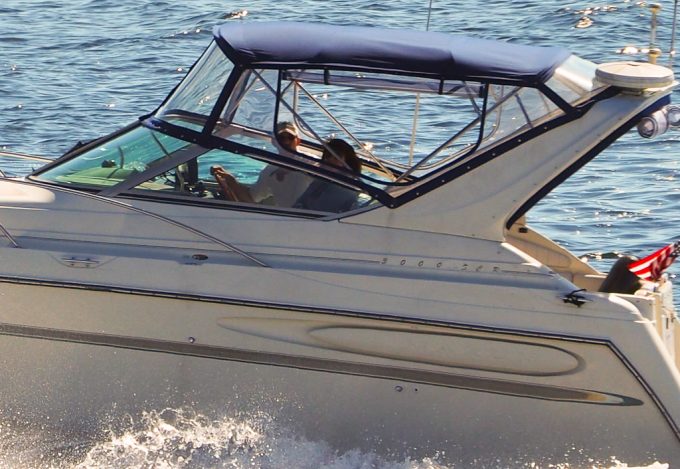

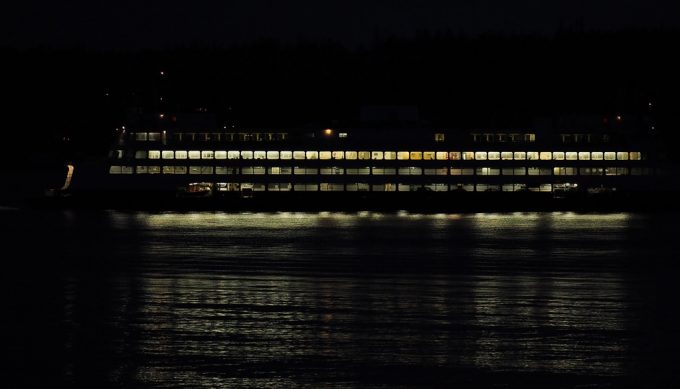




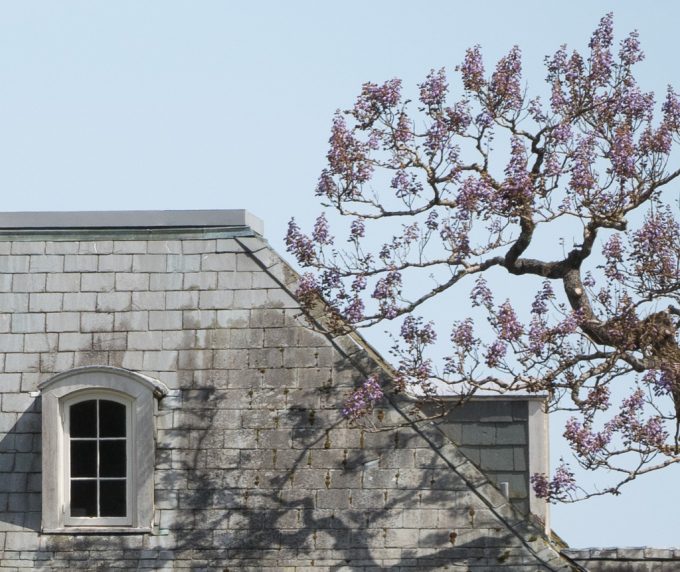
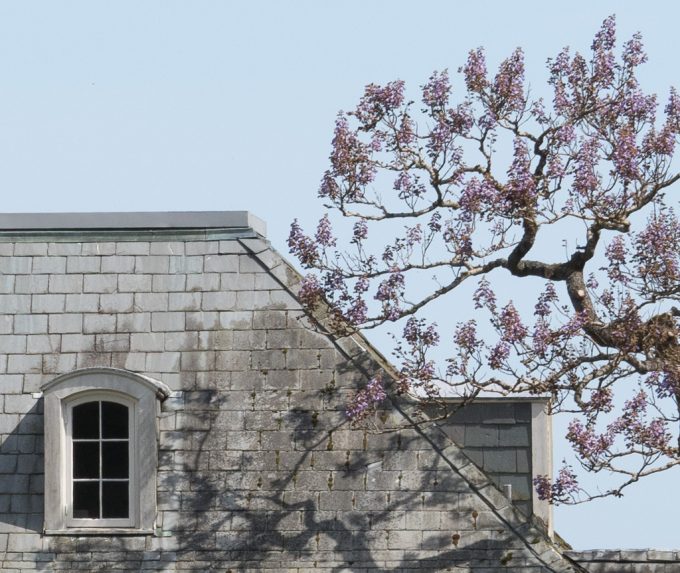
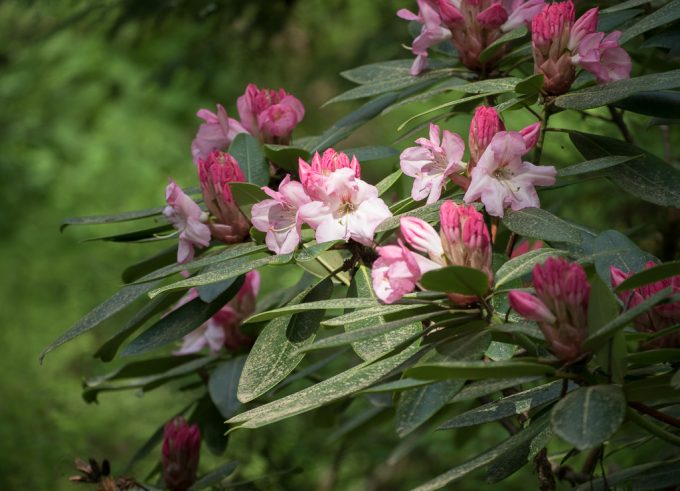
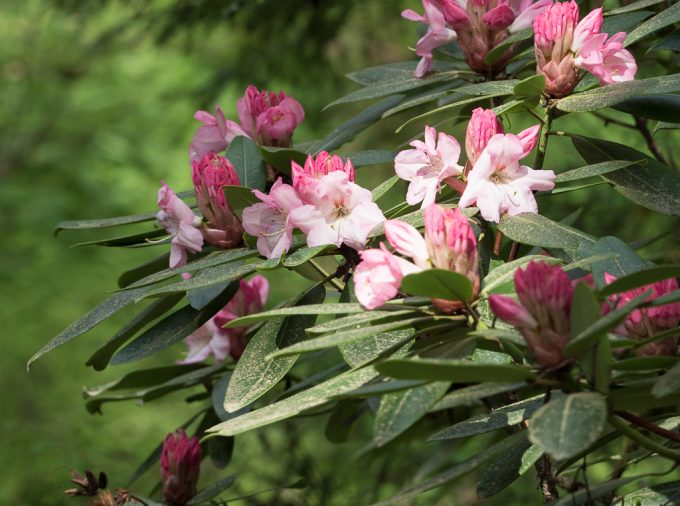
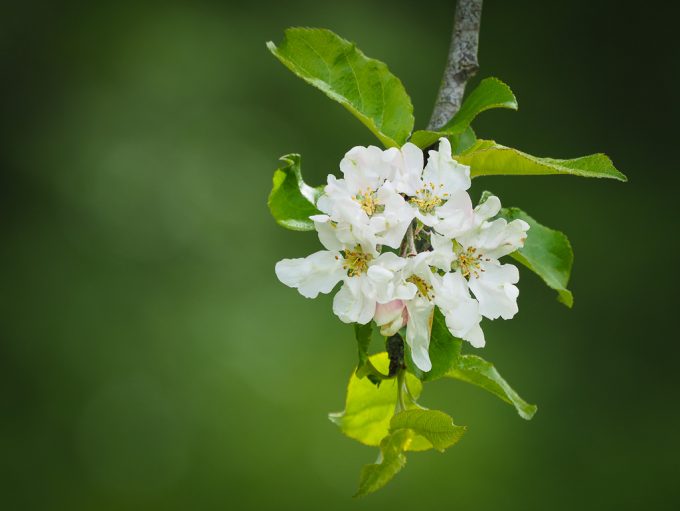

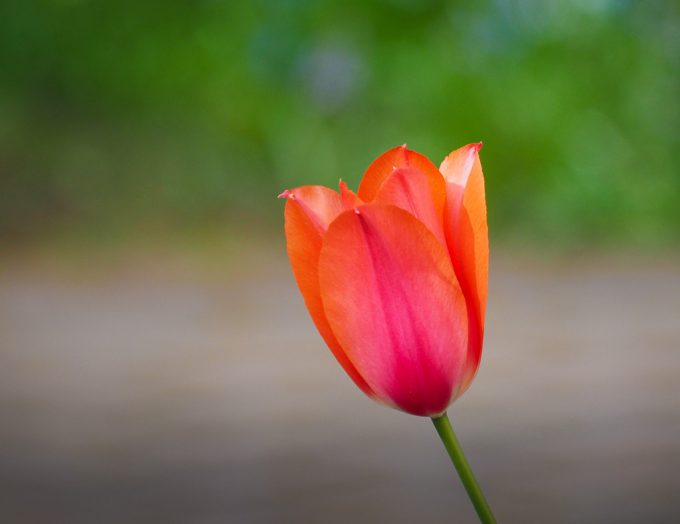
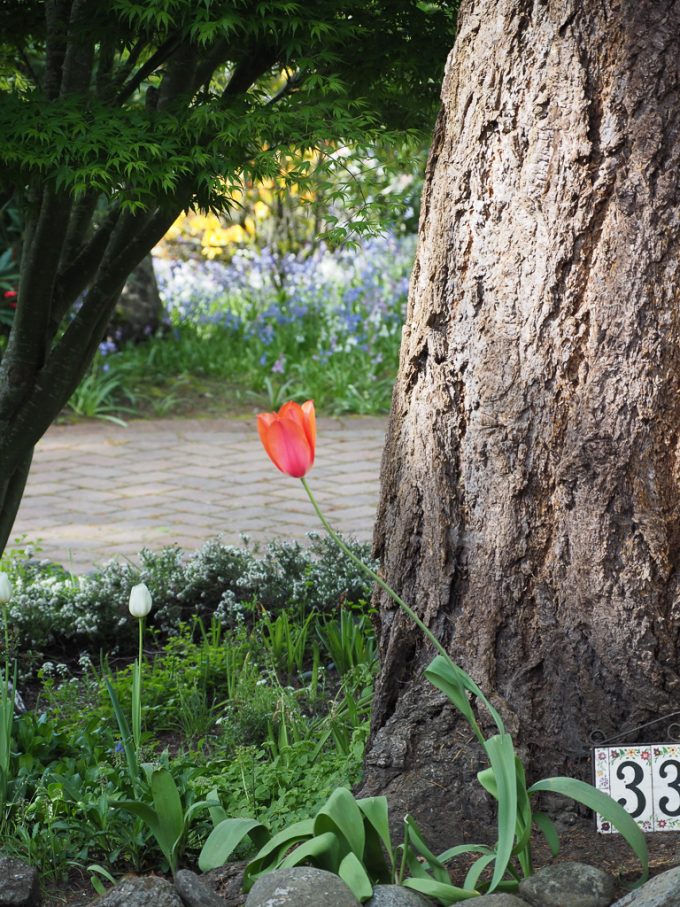
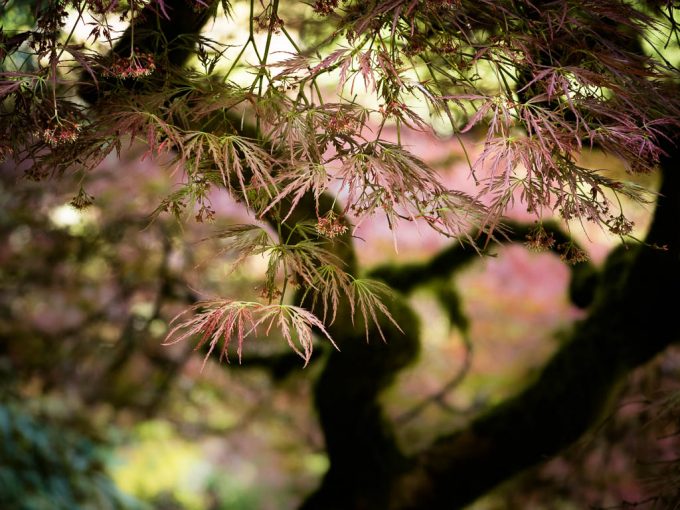
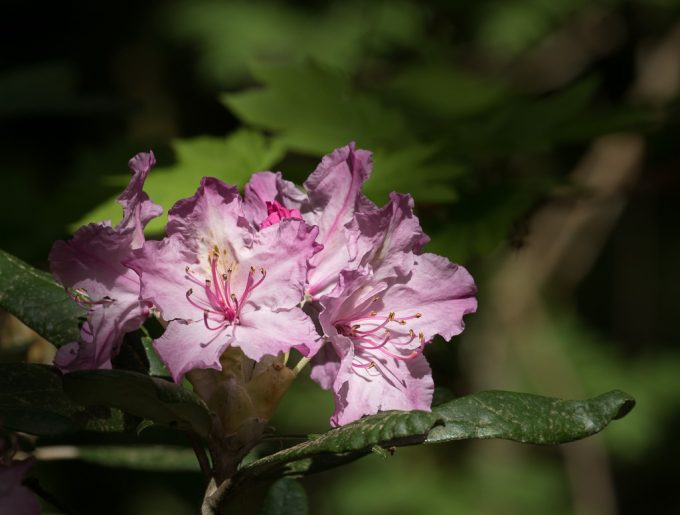
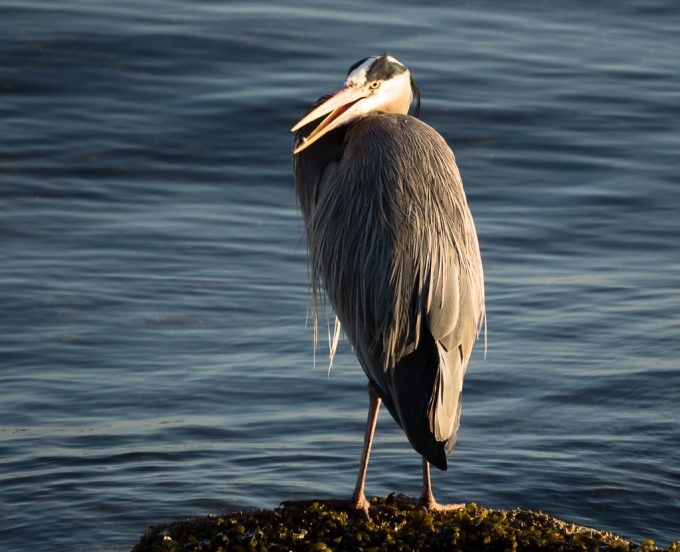
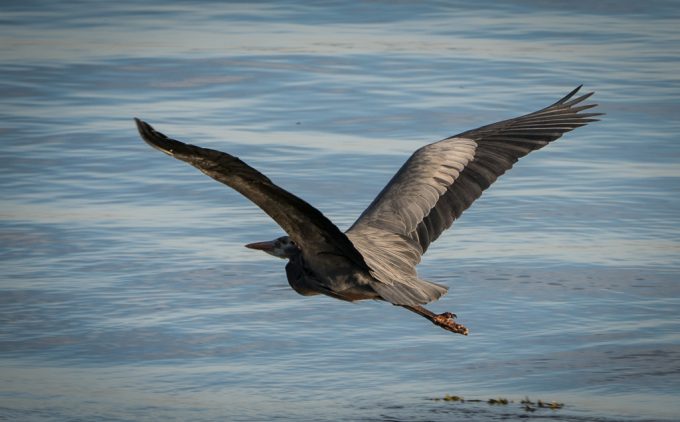
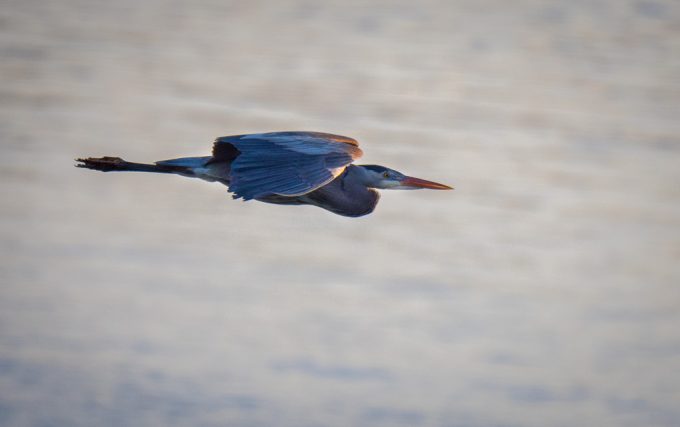
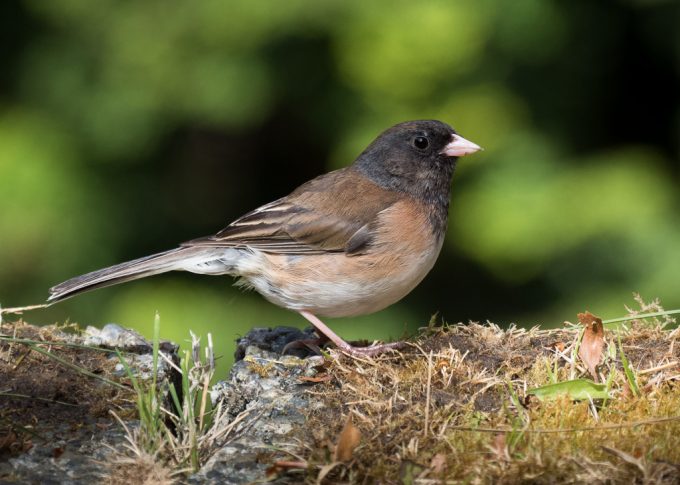
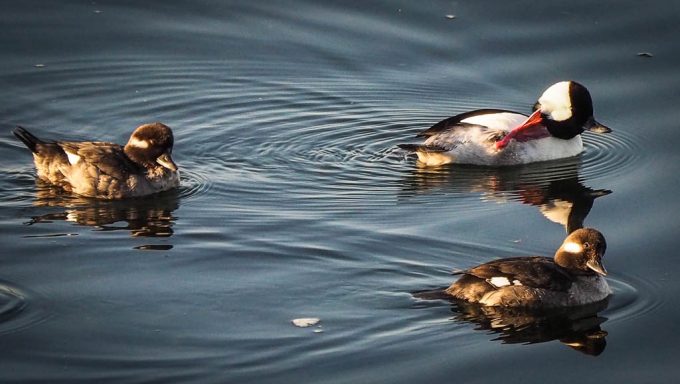
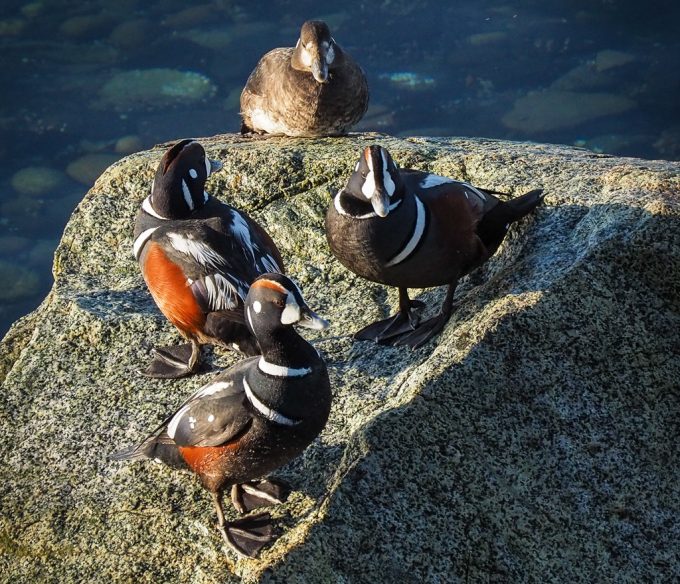
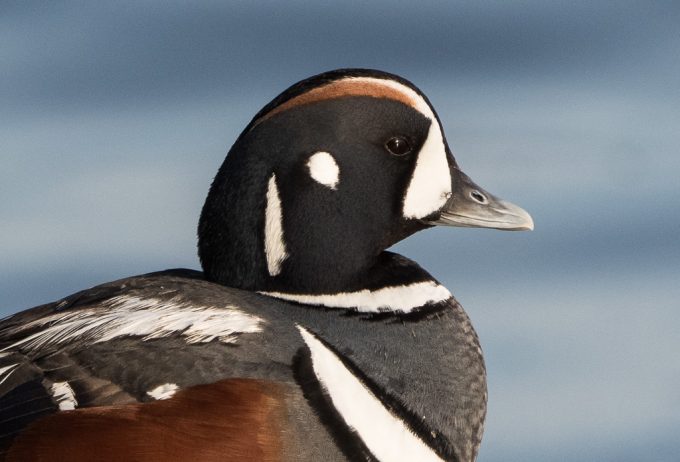
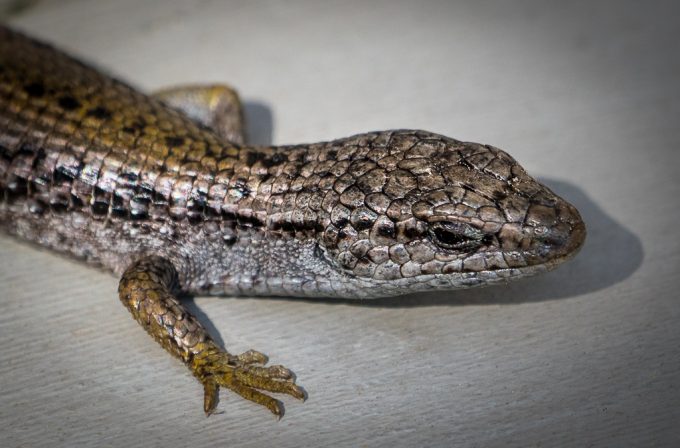
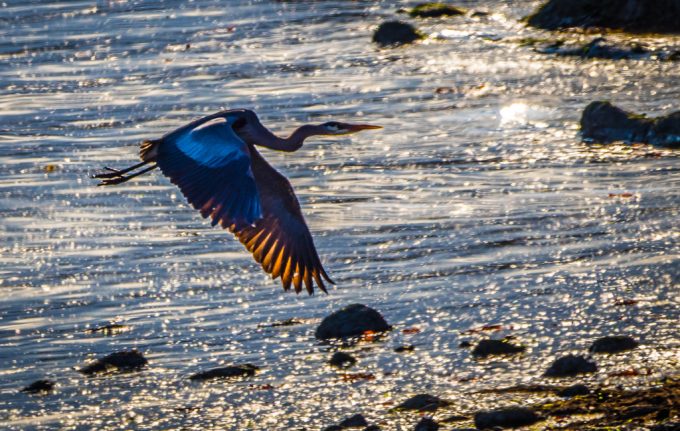
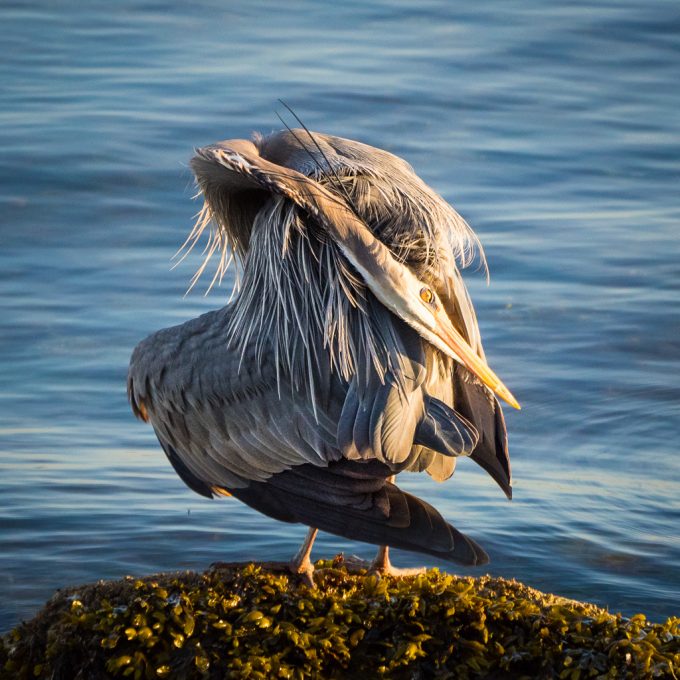


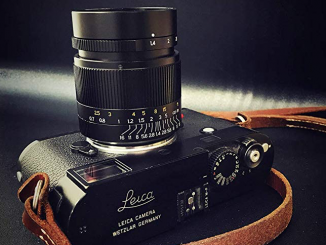
The Olympus bodies, certainly the E-M5ii and PEN-F have “Olympus Dual Stabilisation” which will operate (Lumix) lens OIS and IBIS together independently. This is not up to Dual-IS or Sync-IS but better than OIS or IBIS alone. It was Pat.Pend. in 2014. It is very badly documented, like they don’t want you to know about it.
To use it – Turn the lens OIS ON (if it has a switch). In menu turn “Use Lens-IS” OFF. The camera does the rest.
i have had 2 copies of this lens. optically i luv this lens but the zoom needs about 50 ft/lbs of rotation force to break it free after pausing the zoom.
i phoned Panasonic and the Camera store in Calgary about this.
they claimed everything should be ok and were suprised that my replacement lens still had the “stiff zoom mechanism”!
bottom line is that its a great versatile lens which i get great photos with.
But its zoom mechanism is total BS.
This sounds like a problem with the zoom lock. Does moving the lock ring make any difference? On mine, the zoom is stiff but not ‘solid’ in the ‘LOCK’ position and fairly light at ‘UNLOCK’.
Hi mike, i have over 40 years of experience playing with camera gear and constantly read and research.On an average day I use my 100-400mm lumix and 300mmf4 olympus lens many many times. Im totally intimate with my equipment.wouldnt say Im totally knowledgeable but try my darndest to keep learning. I realize that the conclusion about the zoom lock would seem logical. Believe me when I say this, the Lock has no play in this unless it does not fully release internally, which in both instances it seems to do. I constantly check to make sure its in the unlock position.This sticky zoom is another issue altogether and Ive just learned to live with it. Personally Ive never encountered a sticky zoom mechanism similar to this.
Grip the zoom ring closest to the camera and do not squeeze. The ring will turn most easily.
If you grip the ring closest to the focus ring, or squeeze tightly, it will jam.
The zoom ring is too flimsy.
You can clean out under the ring with dental floss or a thin strip of plastic e.g. like screen protector without the sticky, it seems to attract grit.
Hello Bob and other commenters,
Thanks for the very interesting review and comments. It is very useful to get practical information about photography results that include shooting distances, to really provide a sense of the results one can expect.
I have an Oly EM-5 II for portability, EFV and other technical aspects. I have hungered for a longer lens for wildlife photography.
Consequently, I also have a Canon 760D coupled with a Tamron 150-600. This combo provides 24 megapixels and 960 mm equivalent. Ofcourse, this takes up a huge amount of room in the kit.
I would prefer to have a MFT body and quality long zoom lens (no 300mm prime for me) to make everything more portable.
Everything in photography is a compromise of cost vs quality vs size/weight, so I am unsure if the loss of the equivalent mm, less cropability and phase detection autofocus is worth the compromise.
I am no techno boffin and only a recent enthusiast with no formal training, so I am sure improving technique and experience will get better results out of whatever equipment I end up with. I have found the Oly with 75-300 is quite slow to focus at the tele end compared to the Canon, and worry this will translate across to the Pana 100-400.
I have a arranged a two day rental of the Pana this weekend and will do side-by-side comparisons with my Canon/Tamron combo.
However, I’d be interested in anyone’s experience with the EM-5 II and this lens, in addition to thoughts if upgrading to the EM-1 II would be worth it (it’s a very expensive body in Australia) for 20 MP upgrade and improved auto-focus vs switching to a Pana body that will allow for the Dual IS, 20 MP and improved focussing.
Many thanks,
Craig
Not fully compatibe with EM1 Mark II. CAF does not work well and Pro Capture is grayed out.
That would be a deal breaker for me. Any further experiences with the EM1 MkII?
Does anyone have any further comments on E-M1 MkII compatibility with the Pan/Leica 100-400 lens? I suspect that Tracking AF is a very important aspect for potential users of this combination. I currently use an E-M1 MkI and find the AF performance is inadequate for birds in flight.
The MKII should be wonderful for birds in flight. It’s AF is quite faster than the MK1. Also, the 100-400 should work just fine with the MKII. I’d suggest renting a MKII for 2-3 days from lens rentals to give it a go.
Thanks for that suggestion, Steve. Somewhere, I think I read that Tracking-AF might be improved further, at some time in the future, through a firmware update to the MkII
I’ve been shooting with the Panasonic/Lumix/Leica 100-400mm and it’s not Zuiko 300mm F4. Take it from someone who’s been shooting Canon 500mm F4 for years.
thanks for sharing you have convinced me to buy this lens
Thank you very much for your review in details.
I am most interested in the photo #34.
Would you mind sharing the full size photo with me?
If OK, please send the file to me at faithyeung@hotmail.com
Appreciated and Thanks,
Faith
What a superb review. Have been toying with gettin one for a while. You’ve talked me into it.
I’ve always thought the same .. It’s all very well havin f2.8, but if you have’nt got the reach, which in nature you ain’t most of the time, what’s the point. Unless like you say, you wanna carry a 2ft long bazooka around.
Only problem is, i’ve told the wife it’s all yoir fault, lol
Thanks for the excellent review. I have one question. Has anybody heard any suggestion that Olympus is going to come out with a similar lens? As I understand it the Olympus 300 mm prime lens has OIS which integrates well with the IBIS in the body. So it seems plausible that an Olympus 100-400 might offer better stabilization to those of us using Olympus bodies.
Any thoughts on this?
Great write-up of a great lens! I’ve had mine for about 2 months now (they’ve been trickling through slowly to UK) and it’s fully up to my expectations.
The stabilisation works well on my Olympus E-M1 – it’s easy to see its effect when looking through the finder.
With such a narrow field of view at full zoom, it is very useful to be able to zoom out, in order to ‘find’ a moving subject.
Although I had bird photography in mind, the close-focus capability makes this an excellent dragonfly and butterfly lens, which have been my main uses so far.
All in all, this is a very versatile piece of kit.
Mike
One question about activating the OIS on an Oly body. (E-M1 and Pen-F)
Normally, when you set lens priority IS on in the camera menu, IBIS is used on a non OIS lens, OIS is used on an OIS lens.
However, I read confusing info in the manual saying that this does not work with lenses with an OIS button.
Can you confirm one way or the other?
Any way I can sse or hear which IS is working?
Resistance was futile, I ordered me one and got a delivery estimate of 2 weeks. Hope it’s not much longer. I I preferred the a zoom to a prime for long telephoto. Sold my Nikon P900 and Oly 75-300 to fund about half of it.
1fsggesign1-
Are you referring to the Panasonic 100-300? That’s the only m43 lens with that particular zoom ratio. The similar lens from Olympus is 75-300. This Panasonic 100-400mm should smoke either of those 2 lenses. I have the 100-300 and it’s a decent lens, but pretty sure experienced, good shooters would never call it a very good or excellent lens overall. Still nice, due to it’s “relatively” smallish size. Recently bought the Olympus 300mm f4 and it’s an amazing piece of glass. It’s built like a tank and should give excellent service for years, but shouldn’t be quite so pricey, imo. Paraphrasing the author of this article, sometimes lots of prime tele can be too much tele!…so a lens like the 100-400 would be way more versatile.
Bob,
I really enjoyed your excellent and varied studies with this superb lens. Thank you. One niggle concerning frame #35. You’ve offended the entire Bufflehead community by labelling them as Mallards. For shame 🙂
bob – this is a very informative review. I just got the lens and am trying it out on my OMD Em1. In one of your comments, you mentioned that you read that it is better to use the lens OIS and to disable the Oly’s IBIS. Can you point me to where you read that please? thanks again!
I don’t know if i’ve read that. But I know from personal experience that this lens OIS is much more effective than the IBIS on my Olympus E-M1, at 400mm. So I disable the in-body, and enable the lens. The difference is so significant that it only takes a few minutes of experimenting to work it out!
Bob, I finally got the lens Saturday afternoon.
One question about activating the OIS on an Oly body. (E-M1 and Pen-F)
Normally, when you set lens priority IS on in the camera menu, IBIS is used on a non OIS lens, OIS is used on an OIS lens.
However, I read confusing info in the manual saying that this does not work with lenses with an OIS button.
Can you confirm one way or the other?
Any way I can sse or hear which IS is working?
Just found this web site as I am thinking of getting the Panasonic 100-400. I was intrigued to the comments about the lens IS being superior to the Oly body IS. I experimented with a Panasonic 14-140zoom and found the Oly body IS gave better results than the Panasonic lens IS.
Totally contrary to what this article reccomends. Admittedly the Panasonic 14-140 isnt in the same league as the 100-400, but I should think uses similiar IS technology.
This is a most interesting review so thank you. Micro 4/3 is getting more tempting by the month! When I first heard of this lens, I kept wondering if it was really worth staying with the Sony A7 (great camera, don’t get me wrong).
If you want to get a job done with a camera (and not obsess too much about pixel count), you have to find the sweet spot between sensor size and image quality. I still think, perhaps wrongly, that this sweet spot is APS-C (which is basically half-frame, in relative terms anyway). But Micro 4/3 (quarter frame) seems to provide good competition. And the lenses can be even smaller.
You’ve also brought up a valid comparison between primes and zooms. Primes are nice for film crews. But for photographing birds perhaps something that sacrifices a little image quality while being more practical is the way to go. On the wider end, I think primes are arguably the better choice. There is no grave need for that much practicality. But for the longer end, perhaps zooms are more practical.
I think that in conclusion, the smaller sensors certainly can replace the DSLRs and larger sensors. The results you’ve shown are clean and sharp. Perhaps a similar zoom with an aperture of one stop wider could suit some people. But only systems based around a smaller (but not too small) sensor give us the option of how big our lenses are going to be.
I purchased this lens to go with my Olympus EM1. Since I live on a riverbank I get plenty of opportunities to photograph birds and wildlife. However, although the lens seemed to focus very quickly and the viewfinder showed sharp photos, when I looked at them in LR the images were out of focus. I tried switching the lens’ IS on and off but it made no difference. I’m sure I also tried turning off the Olympus IS too. I really wanted to love this lens but in the end had to send it back as I couldn’t get a sharp image. In my opinion I don’t think the lens is fully compatible with the EM1. I think you need a Panasonic camera to get the best results maybe.
I just took this lens and my EM1 on a safari in Tanzania and have hundreds of tack sharp images. I’m not sure what the issue was, but it is a great combination
Thank you for this info. As an update, I sent my OMD EM1 back to Olympus as I was disturbed at how many photos were out of focus. Turns out that there was a fault with the camera’s stabilisation, which Olympus has corrected (free of charge – good on them!). I am now waiting for the new EMD MK II to come out and will probably buy the 100-400 again for my safari at the end of Feb 2017.
Nice write up. I too am finding the 100-400mm to be exceptional. For many nature enthusiasts this is a game changer. Here’s a link to several blog posts I’ve produced on this lens. http://naturalexposures.com/?s=leica+100-400
Great review. Can’t wait for this lens to reach the UK!
Brilliant, real world review that is really useful in a way that the technical charts could never match. Thank you. I have the 40-150 you compare the Panasonic against and I am waiting for the 100-400 – it has been in order since first announced but they seem to be making them just one at a time for the UK market. Your review has made me even more impatient to get it in use. Your shots are terrific.
Thank you so much for this enthusiastic review. I agree with you 100% about the image quality of this lens. I received my first one 3 weeks ago, but I had to return it because it was way too stiff (and, yes, I did have it in the unlocked position). Unfortunately, the new one which I received last week is even worse. I like to shoot video as well as stills but trying to zoom out or zoom in during a clip is more or less impossible to do smoothly even on a tripod. Do you think I’ve got another bad copy of the lens? Or is it just me?
Just been and tried the 100-400 and it IS very stiff, so not bought…yet.
great review. i want this lens !!!
Worth a million times any DXO “measurement” …
Thank you very much indeed!
Very nice of you to say Markus, you are most welcome.
Excellent review!
You’ve convinced me to bite the bullet… a whole magazine,, in fact… and order one!
I’ve used a Panasonic 100-300mm for the past 5 years and wished for a better lens with more reach and here it is. It should be a perfect compliment for my GX8!
Thanks!
what a great review, Bob, and one of the best user reports that I have read. If I were considering M4/3 as a system, this lens would be on my short list. You have provided the images that illustrate the power of this system and its utility.
Thank you à lot for this very helpfull review. I had doubt about the pany IQ. I was wrong. The Lens is good enough for my usage.
Hi!
I really like your review! I recently read Steves first look at the 300 mm Olympus lens and there is no doubt that the 300 mm lens is a great piece of glass. I am more interested in a good zoom and I had the opportunity to try a sample of the 100 – 400 Panasonic lens. The thing that made me not order the lens was the fact that it seemed to backfocus. I used an Olympus EM-1 and the pictures looked great in the viewfinder and I only used the center AF-point. When I looked at my sample-shots I soon saw that in a group of people, the ones that stood beside, and somewhat behind , the guy in the center was sharp. But not the guy in the center. Everyone was standing still, talking.
This baffled me. I litterally thought it was impossible to back, or frontfocus, with sensor based AF.
Have you noticed this at all in your shooting? I would really like to know since I was so close to buy this lens and still am interested.
You write that you disabled the IS in the body. I did not think to do that, I wonder if that might affect the AF?
Looking at your excellent article I only see what could be backfocusing on picture #28 (the tulip). It is a low res picture but the green foliage behind and above the tulip look more crisp and sharp than the flower. Also the sign in the lower right corner look a tad more distinct than the flower. Or am I wrong?
I hope to hear your reply on this. If you have no such experience with your lens I might just give this zoom another try.
Again, thank you for a great review!
Stefan
To be honest I didn’t pay much attention in the #28 shot you mention. I first shot the tulip at 400mm, looked at it on the LCD and thought “wow, pretty interesting.” Then “I should zoom out and show people what this scene actually looks like.” Boom, one shot. I should think I did put the focus on the flower although it is a small target in the scene as shown. I think I’ll say that no, I have seen no back focus issues.
Take a look at image #10, on of the kayaker shots. I got a few shots putting the center square on the kayaker, then a couple on the seagull, then a couple more after the kayaker passed the seagull, again focusing on the kayaker. Each was focused exactly how I asked them to be. (I just presented this one because I thought an in-focus kayaker was more interesting than an in-focus bird with blurred kayaker).
As far as your test, I wasn’t there, so not sure what to say. One thing is that a 200mm effective focal length doesn’t seem appropriate for shooting a group of people (unless of course they are very far away). You didn’t mention your shutter speed, did you did mention they were talking, so they are moving, not posing. Perhaps that is the source of your people not appearing to be in perfect focus?
Many thanks for your questions and thoughts!
Thank you for replying!
I will go to the store again and try to shoot a new set of testpictures. This time I will take care to disable the built in IS in the EM-1.
The first time around I tried the lens it was a sunny day and a few workers stood around the showel of a digging machine. I focused on the face of a beardy guy in the center of the picture and shot a few sequences of pictures on different lengths. At 400 mm (with 800 iso and fully open I got 1/500 of a sek) the showel behind the beardy guy was pinsharp but the guy himself was slightly out of focus. the other two workers, who stood there, was standing beside the showel and they were sharp as well.
I do not expect miracles of sharpness, it is a zoom after all. I just wanted the face I focused at to be in focus.
I suspect that the enabled IS in my EM-1 could have affected these pictures. I will try again.
Cheers!
I would suggest using center point focus so you know what the camera is focusing on, and you have control. I have used center point for 20 years, no matter the camera. Focus/Recompose. This makes sure you do not get things behind your subject in focus.
Thanks for an outstanding write up.
I am an ardent motor sport enthusiast. I love photographing birds as well. The in body image stabilisation for the OMD EM 5MkII is outstanding in holding manual focus 400mm lenses steady. I am sad to hear that the Panasonic lens doesn’t behave the same way. That said, I agree with your view having tried the 35-100 f2.8 Panasonic lens on my OMD and found the image stabilisation wanting. So much so that I obtained better results with the 150mm f2 four thirds lens on an adaptor over the Panasonic lens.
For motor sport though, I found that the OMD was too slow as a camera to track an F1 car. Further, the EVF was no help with a race car on full scream going into a corner. I lose sight of the subject for too long while the EVF “refreshes” itself in between exposures. This I found even with the camera set to 10 frames per second. I still resort to DSLRs and long lenses and the Nikon 1 V3 which I think is still the fastest little camera around.
Thanks Again
I’m an ardent F1 fan, would give anything to also being an F1 photog. Their cornering speeds surpass anything on the planet. Hard to imagine a more challenging subject (well, perhaps a missile in flight)?
If it were me, the tool for that job is a Canon/Nikon current pro body.
And thanks for your thoughts.
Hey Noel,
For your EVF issue, make sure you don’t have post shot review switched on. I came across the same issue with my E-M10 II but noticed my wife’s E-M1 didn’t behave the same. One I’d switched off the review option, all was well.
Apologies for the super tardy reply.
J.
Useful review and great pictures. I will go for that lens.
Thanks again
Thanks for your superb review. That was perhaps the best 15 minutes I have spent online in the last year. I live about 60 miles south of Seattle and the birds are amazing, but I have never considered that it would be possible to capture them with my EM-1. You have changed my mind.
That’s very thoughtful of you John, thanks so much.
I’ve just started to follow you Steve! I now know why! Have an Oly M10 and 14-42 + 40-150 kit lenses, but I’m hoping to get more lenses as time goes by. So glad I changed to csc I never realised how many lenses were on offer from Olympus and Panasonic. My genres are Street, Landscape, Wildlife and Macro! So plenty for me to drool over here! Excellent review!
Wow! This is a really thoughtful and detailed review. Appreciate the huge effort that you have put into this. I am seriously considering this lens. I already have the older Panasonic 100-300 that I use with my OMD EM-5 (the original one, not Mk 2) and am generally ok with the results. Your review seriously tempts me since the sharpness here while zoomed out appears to be better.
Thank you. I own this lens and am very happy with it. Your photos are inspiring.
Have just been chatting to some birder friends about this topic and yes they all agree that Canon or Nikon full frame is the kit for serious wildlife photography
However this kit is super for birders to bring on birding trips where portability and good results are required.
All were keen to stress the need for monopods and occasionally tripods bean bags etc even with current stability technology which is great but not a cure all.
It’s been years since I shot any wildlife images but the option to record rare birds is now a reality when in my day it was seriously difficult.
A very good analisys and honest. Thansk a lot. I am interesting in the filed os astrophotography. Any body does know some example of photos with moon or sun (mercury, venus) and stars with Oly 300 mm or Pana 100-400 ? Thansk a lot for better understanding for me.
Thank you so much for a realistic review and pictures as well! My husband and I are amateur birders and the Oly 300 f4 is just way too expensive for us. You just helped me decide to get this lens!!!! Thanks again.
Thanks for the great review. I really appreciate it as I am very much into wildlife photography.
Clearly, the image quality is abysmal (and yes, I clicked on the images). Images are noisy, soft, color tonality is bad. It isn’t a huge step up from superzoom compacts.
This confirms my suspicion that there is no free lunch, and full frame is the only way to go for wildlife photography. Yeah, the lenses can be huge, but the recent Canon 100-400L, Sony 70-400 G2, or Nikon 200-500, are all fairly portable and offer top notch IQ. You could crop that Canon 4x and it would still look sharper than this Panasonic lens.
It always takes one, doesn’t it? Mike – in lieu of your harsh comments about these photos, be sure to come back and post some of your first outing wildlife photos with your new lens/camera setup so we can see what you feel really good photos should look like. I am pretty certain someone will want to be equally kind and critical to you about your photography efforts too.
To the OP, thank you for sharing your thoughts and photos with your new Panasonic lens. I think the vast majority of us really appreciated this initial write up on this wonderful lens. I was in my local dealer just last week playing with it on two of my cameras and immediately liked the results. Keep on shooting and sharing.
Fully agree with you Dale. Of course there’s always better, a full frame with an 8k lens will be better … for Pros. But if they were real pros they shouldn’t bother with full frame and shoot with medium format instead. And Pro or not, you’re not gonna hold a lens like that for half an hour so you’ll need a sturdy tripod which will make you miss half of these shots.
You’re right Dale, it always takes one.I believe photogragphy enthusiasts like these are called pixelpeepers and similar computer enthusiasts bitf**kers?
I enjoy both the quality and size of the M43 offerings we have today and have no higher needs as a simple amateur. I doubt more advanced photographers would want to trade-in the comfort and usefullness of such a lens for a pricey and heavy full-frame equivalent that would give them a lot less but technically better shots.
I wonder how many of these shots full frame enthusiasts would have been able to capture.
I enjoyed Bob’s review just as much as I enjoyed Steve’s review of the Oly 300mm and both reviews help me in making my choice between those lenses to replace my Oly 75-300.
I thank both of you for making the effort and taking the time to shoot these wonderful pictures and sharing your opinions.
^^^^^^^^ Like. (Thanks Dale, well said)
Nice one Dale. Yeah, lets see his photos. Heard it all before.
I want to see your photos as well. Pls post the link. Thanks.
Mike, Mike Mike, do we have another full framer that can’t stand that someone can get amazing images with a smaller and much less expensive setup? I have shot M43 cameras professionally for years and have multiple wedding awards to back it up. If sensor size mattered as much as you want us to believe no one would shoot with anything other than medium format. Please don’t insult us with your lack of sensor size knowledge. Please don’t insult us by projecting your sensor size insecurities on us. The images are incredible and the review was beyond outstanding. Thanks Bob! Ignore Mike (and I know you will judging by how professional your article is,) there are those frustrating people that try to lift themselves up by tearing others down. It’s just the plight of the internet.
This is a fantastic review.
I often wish the other writers here would put as much effort as Bob Towery has done here. It’s great to read his thought processes from taking the photos all the way through to the rediscovery of his “images within images”.
I totally agree with Bob. There are so many good images to be found in your pile of rejected photos. Sometimes a heavy crop is needed to cut through the “haze”. This is where M43’s relatively small megapixel count becomes its weakness. But any good photographer/visionary can work around this.
Thanks Bob.
Thanks for an excellent and very useful review. Panasonic seems to have a winner with this one. Would be interesting to compare it with Fuji’s 100-400MM & converter on a Fuji X-Pro2.
What absolutely stunning results; both technically and the shots themselves.
I’ve been a very vocal supporter of the Pana / Leica tie-up since I purchased an original GH1 with the little pancake 20mm, and I currently adore the Nocticron 42.5.
I’m delighted to see the quality is being upheld — maybe even surpassed — judged by these images. Thank you.
Thank you. Great write up and nice shots. I am also an amateur who is happy with the longer lenses on M4/3. I went for the olympus 300, sacriifcing flexibility for a bit more light in the woodland and a constant length lens which helps me trust the weather proofing that little bit more. Looks like there isn’t a bad option between those 2 though.
I spent a week with the family across the border on Saltspring Isalnd, a beautiful part of the world you have there.
Very informative and I agree 1000% one of the best reviews and write-ups on Steve’s site. I also enjoyed all the pictures too, as it does reveal that you are indeed masterful and not just simply showing random test shots. My only wish is if Oly would move up not to full frame but at least to APS-C size sensors. Again thank you for sharing your superb insight with us to appreciate and enjoy!
The images you got with this lens look very good. i’m tempted to get it for my E-M1 for birding. I’m hoping Olympus will come out with an E-M2. Thanks for the review and general thoughts vs. the Olympus 300mm prime.
I’ve also one of these Leica/Panasonic 100-400 lenses. It’s superb for my use: concert, landscape some bird. I use it on a LumixG8. A great combo for travel. Have the 12-35/2.8 too.
Thank you for this balanced an fair report.
That was a good write up and I enjoyed it. Thank you.
Such a pity Olympus and Panasonic don’t work together more closely on making MFT a truly interchangeable standard. The different routes they take wrt to image stabilization is imo a hindrance for broader market acceptance of the great system MFT is.
Well done. Thanks for your hard work to put this post together. I use the Oly 40 -150 (and have the extender), so I’m quite satisfied for now, but your post convinces me that the new Panny is another great option for me and others. Again, thanks so much!
I have been looking forward for a nice review of this lens. Thanks for the great info Bob, helped me in deciding between this lens and the Oly 300mm.
So you prefer the OIS of the lens to the IBIS of the camera? Can you elaborate a bit more on that?
Just got mine and I was really hesitant to get it. I’ve never like the hunks I had with Nikon, and this one wasn’t anywhere that I could pick up and try. I’ve now shot about 100 clicks on the lens, just playing to see whatsup, and I’m amazed–even some 1/20th at 200mm (400mm), especially if you can get your should against a tree, etc. I’m not a birder but there are times and some abstracts out into the ocean waves are coming. I might also say that I had the 40-150mm and wanted to also get the 300mm. Well it just didn’t come out and it still hasn’t (plus more $’s anyways) —ron s.
I am ejoyed the shots and the review. Thank you for your opinion too. I’ve been considering the Oly 100 – 300 and the Panasonic 100 – 400. Currently I have all of the Oly Pro lens, in addition to a few other lens and been wanting to add to my kit. While I’m sure the 100-300 would be superb, it’s the cost that wouldn’t. So your review has given me a good perspective from a casual shooter. Additionally the money saved would allow for another lens and a converter. .
Frank
Thanks for one of the best write ups ever on this site!
I was an active birdwatcher all my life and can even make a claim that few others can equal. Namely I actually saw a yellow bellied sap sucker in Ireland Cape clear island to be specific. (American birds occasionally make land fall in Ireland due to rare weather conditions)
Anyway suffice it to say that it would have been an absolute dream for us then back in the late 80’s to have had such brilliant equipment as the lens reviewed here not to mention the recent review of the 300mm Olympus lens.
These Olympus and other similar cameras are fantastic for amateur wildlife photographers who value portability and quality.The results are here to be seen.
Thanks for posting